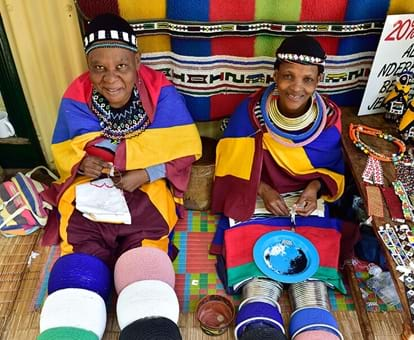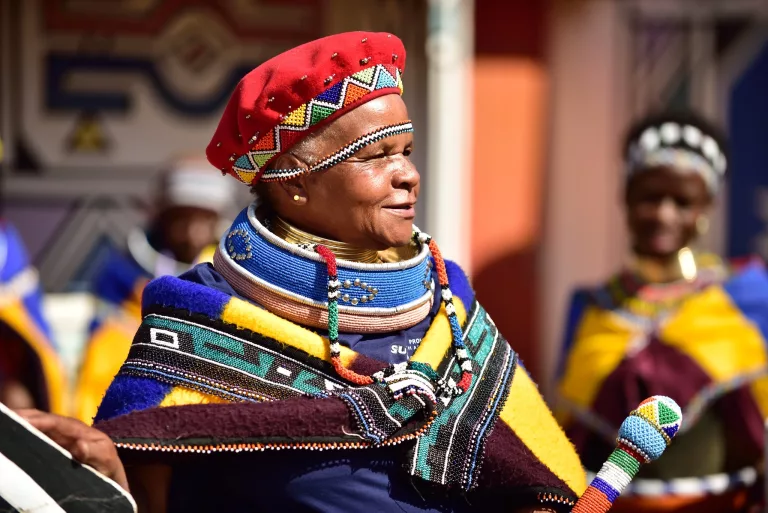Little Known Facts About South African Culture Today.
Little Known Facts About South African Culture Today.
Blog Article
Getting My South African Culture Today To Work
Table of ContentsThe Buzz on South African Culture TodayThe Buzz on South African Culture TodaySouth African Culture Today Things To Know Before You BuyThe South African Culture Today StatementsSome Known Questions About South African Culture Today.What Does South African Culture Today Mean?
A matter of value in Zambian villages is the passing away of enjoyed ones. All participants of the village put money, time and initiative together for the interment of the deceased.During the grieving period; guys remain outside the house and the women remain inside your house of the deceased. After discussing the deceased, the village walks to the area of interment to state their last farewells. Music and dance is an extremely crucial aspect of the Zambian society. The different tribal systems have their very own dancing kinds; however, makishi prevails among all people.
Unknown Facts About South African Culture Today
When it pertains to music, drums are made use of one of the most, with a variety of drumming events. In Zambia, majority of individuals are Christian; Protestant and Roman Catholic. There are small groups of Muslims and Hindus, with the rest adhering to local indigenous tribal beliefs.

South African heritage and society is greatly diverse, and includes various groups of individuals that each have their very own practices and ideas. Having such a variety of individuals and societies is what makes South Africa so one-of-a-kind. In truth feeling of the expression, we are a rainbow nation.
Making it the 7th on the listing of nations with the most Portuguese individuals in it outside of Portugal. Portuguese is not only a society, but it is additionally a language and a race. Portuguese people stem from the nation of Portugal in Europe, however, due to Portugal (like numerous other countries in Europe) exploring the world and overcoming various other countries during the 15th 20th centuries, South Africa has what we call Portuguese South African's living in it.
Getting The South African Culture Today To Work
Amongst the prominent functions of the topography is a plateau that covers nearly 2 thirds of the facility of the nation. The plateau complex climbs towards the southeast, where it climaxes in the Drakensberg range, component of an escarpment that separates the plateau from the coastal areas. The Drakensburg consists of Sparkling wine Castle, the highest possible optimal in the country.
The area north of the Witwatersrand, called the bushveld, slopes downward from east to west toward the Limpopo River, which forms the global border. The western area of the plateau, the middleveld, additionally comes down towards the west and differs in elevation between the highveld and bushveld. In between the Drakensburg and the eastern and southern shoreline, the land comes down to the sea.
Nearer the coast there is a low-lying level called the eastern lowveld. Southwest of the plateau the country comes to be gradually extra arid, providing means to the stony desert of the Great Karroo, bordered on the eastern by the reduced, better sprinkled plateau of the Little Karroo. Dividing the completely dry southerly inside from the sandy littoral of the southerly coastline and West Cape is another range, the Langeberg.
The Facts About South African Culture Today Revealed
The country's racially, ethnically, and politically divided background has actually produced national and subnational signs that still work as symbols of the country, and others icons that are accepted only by certain groups. The monoliths to white settler conquest and political supremacy, such as the Afrikaner Voortrekker ("leader") Monolith in Pretoria and the Rhodes Monolith recognizing the British colonial empire builder and Cape prime preacher Cecil Rhodes, remain sectarian icons.
The very first modern citizens were the San ("bushman") hunter-gatherers and the Khoi ("Hottentot") individuals, that rounded up animals (South African culture today). The San might have existed for thousands of years and left evidence of their presence read what he said in countless old cave paints ("rock art"). Bantu-speaking clans that were the forefathers of the Nguni (today's amaZulu, amaXhosa, amaSwazi, and vaTsonga individuals) and Tswana-Sotho language groups (today's Batswana and Southern and Northern Basotho) migrated below eastern Africa as my review here very early as the fifteenth century

Both former republics of the Orange Free State and Transvaal (South African Republic) were established by Afrikaner inhabitants that beat and dispossessed the Basotho and Batswana. Lesotho would certainly have been forcibly integrated into the Orange Free State without the look at more info extension of British defense in 1869. The utmost unification of the nation arised from the South African War (18991902) between the British and the 2 Afrikaner republics, which reduced the country to ruin at the start of the twentieth century.
Afrikaners historically considered themselves the just real South Africans and, while providing complete citizenship to all citizens of European descent, refuted that standing to individuals of color till the autonomous change of 1994. British South Africans keep a feeling of social and social connection to Great Britain without damaging their identity as South Africans.
More About South African Culture Today
The variety and fragmentation within ethnic collections and the equilibrium of tensions in between those teams throughout the twentieth century avoided interethnic civil conflict. While intergroup tensions over resources, privileges, and political dominance stay, those conflicts are as most likely to match Zulu against Zulu as Zulu versus Xhosa or African versus Afrikaner.
From colonial India, British vendors and managers brought the rounded steel ornamental roofs and slender shoelace job pillars that still exemplify the outdoor patios of cottages in towns and cities throughout the nation. Holy places contribute an essential building element also in the smallest towns. Along with the soaring steeples and traditional stonework of Afrikaans Dutch Reformed churches, Anglican churches, synagogues, mosques, and Hindu shrines offer variety to the spiritual architectural scene.

Butchering and the brewing of standard grain beer are essential in securing the engagement and goodwill of the ancestors who are considered the guardians of good luck, prosperity, and wellness. Indian areas keep their native culinary practices and use them on Islamic and Hindu ritual and ceremonial events. Afrikaners and Coloured individuals collect at weekend breaks and unique celebrations at multifamily bbqs called braais, where community bonds are reinforced.
Because this was the primary economic enterprise of both black Africans and white homesteaders, conflict between those groups fixated the ownership of grazing land and livestock. In 1867, the biggest ruby deposits worldwide were uncovered at Kimberley in the west main area. The wealth from those areas aided fund the exploitation of the biggest gold reef worldwide, which was discovered on the Witwatersrand in 1886.
Excitement About South African Culture Today
This brought about misconceptions and intentional misstatement in the dealings of white settlers and government authorities with African chiefs during the colonial duration (South African culture today). In the facility of African gets, some elements of communal and primarily "tribal depend on" land period were protected, and also in white country areas, types of communal period were still practiced in locations with African communities
After the autonomous improvement of 1994, programs for land restitution, redistribution, and reform were set up, however development has been sluggish. The white minority still regulates eighty percent of the land. Following agricultural land intrusions in Zimbabwe, the Department of Land Matters has actually vowed to speed land redistribution.
Report this page